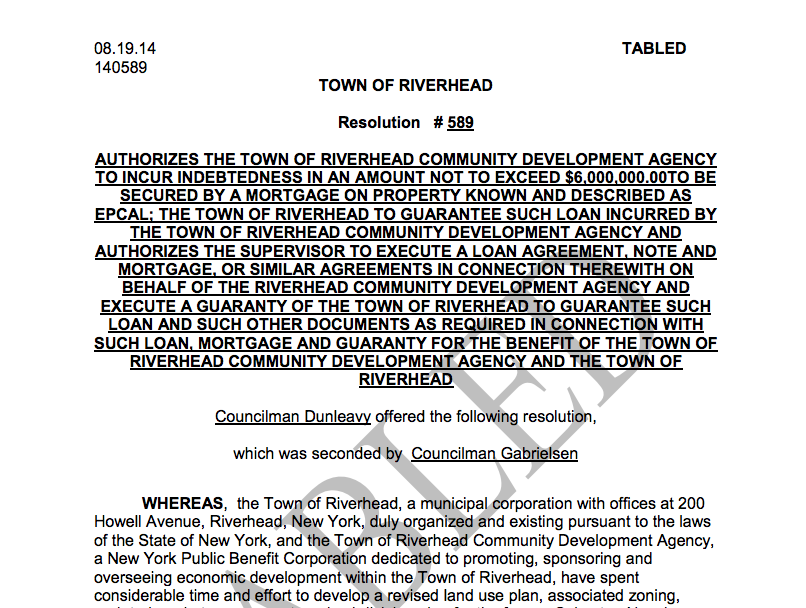Editorial: It’s a bridge loan to nowhere
 Over the past decade, Riverhead Town leaders in current and previous administrations have dipped into financial reserves to balance town budgets. Those funds have now run out and hard decisions have to be made in order to close a looming gap of $4 million — nearly 10 percent of the town’s general fund — next year.
Over the past decade, Riverhead Town leaders in current and previous administrations have dipped into financial reserves to balance town budgets. Those funds have now run out and hard decisions have to be made in order to close a looming gap of $4 million — nearly 10 percent of the town’s general fund — next year.
Borrowing against future land sales at the Enterprise Park at Calverton — a bridge loan as it’s been called — may seem an easy way out. But the risks are great and it should be avoided. The town is already unable to meet its debt obligations on one gamble it made on future revenues: the Community Preservation Fund. It must learn from its mistakes. The idea is to pay back the bridge loan after two to three years using anticipated proceeds from selling town land at EPCAL. Aside from having to pay interest, the town’s history of selling land there speaks for itself: The last sale was 11 years ago.
Until now, Supervisor Sean Walter has candidly and unabashedly touted an all-or-nothing approach in advocating for the bridge loan: Sell the land and he’ll save taxpayers from a looming, double-digit tax increase. But if land isn’t sold, town residents face a tax increase that could be twice that much — or more over time, should the town keep taking out loans.
From a self-proclaimed fiscal conservative, nothing about Mr. Walter’s plan seems conservative.
But it’s the sheer lack of creativity evidenced so far in discussions about reducing the budget gap that has been most disappointing.
Up to now, no Town Board member has proposed any detailed, out-of-the-box ideas that would plug the hole — whether by cutting, consolidating or finding new revenue sources. Considering they all approved this year’s budget, the blame lies with them just as much as with Mr. Walter.
Finding a common ground between a tax increase, cuts and limited borrowing will likely be what’s best in the end. And until the Town Board finalizes this year’s budget, nothing should be off the table.
How about 3 percent (or even 2 or 1.5 percent) cuts across all town departments? Or furloughs? What would the town’s services (and pocketbook) look like if it folded its dispatching, or even its water district or police department, into the larger Suffolk County entities? Are there any permits the town can extend to two years instead of one? Can fees be increased? Surely, with these questions and so many others as a start, that $4 million deficit can be reduced.








